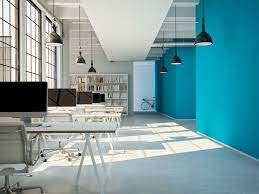You know the saying “there’s no such thing as bad publicity?” Well, it’s a lie. There is such a thing as bad publicity, especially when it comes to color and choosing the right commercial painting in Melbourne.
If you’ve ever painted a room only to find that the color doesn’t look anything like what you saw on the chip in the store, you can understand why. It’s not always easy to tell what a color will actually look like in your office until you paint the walls with it, which means there’s always a chance of getting it wrong.
This can be particularly problematic for an office space, where people spend a lot of time and where you want to create a comfortable atmosphere that promotes productivity and collaboration. Choosing the wrong color can have exactly the opposite effect.
The good news is that there are ways to make sure you avoid this problem and get the right color for your office. Here are some tips:
Start with samples
You’re not going to get an accurate idea of what any given color will look like unless you see it in your actual space, so buy samples or take advantage of any free swatches or cards offered by paint manufacturers.
You’ll have to live with it for a long time.
You might love that color at first, but will you still feel the same way after a year or two? Many business owners come to regret their paint choices once they get tired of seeing the same colors day after day. Consider sticking with neutral tones, then adding pops of color through furniture and accessories that are easier to change out.
Know your audience.
What type of people do you want to attract? Neutral colors like beige, brown and gray are great for most offices because they help create a calm and professional environment that appeals to a wide variety of people. But those colors could be boring if you’re trying to appeal to young creatives or children. If your business caters to a specific demographic, it makes sense to lean towards colors and tones that are appealing to them.
Consider your brand
If you’re painting an office for use by employees, or if you have clients who visit your office, you want to make sure the color matches your brand. This is particularly true if this is a boutique or retail store that needs to match brand colors. A small business insurance agency probably doesn’t need to worry about this as much, but many companies want their offices to reflect their brand identity.
Color Psychology
The concept of color psychology refers to the effects of colors on our moods and behaviors. In particular, they can impact our feelings of aggression, arousal, enthusiasm, tranquility and more.
Pantone’s Color Institute has studied this phenomenon in detail with the aim of improving communication through effective use of color in design. They offer a range of resources including:
- Color Intelligence: The Pantone Fashion Color Report; this report contains up-to-date information on seasonal colors for fashion and interior design.
- Color Guide: Solid Coated; this guide contains 1,867 solid colors for commercial printing or digital graphics use.
- Solid Color Guide: Solid Uncoated; this guide is similar to the previous one but it only contains uncoated colors for use in brochures or other non-glossy materials.
Think about light
Light can make even the most beautiful colors look terrible at certain times of day — or bring out the best in them at other times. Take a look at paint chips at different times of day to see how they look under different lighting conditions.











